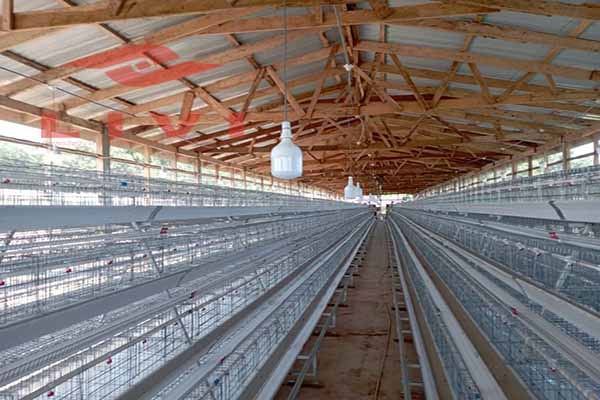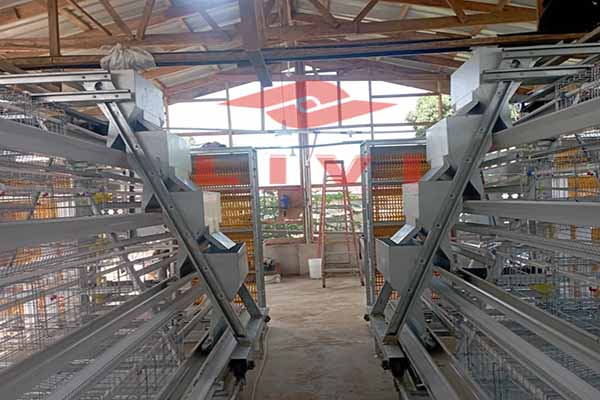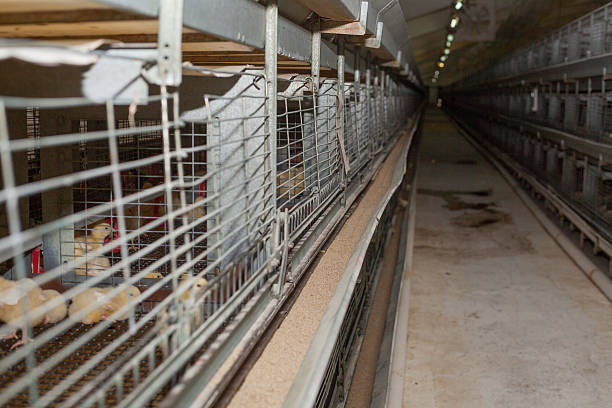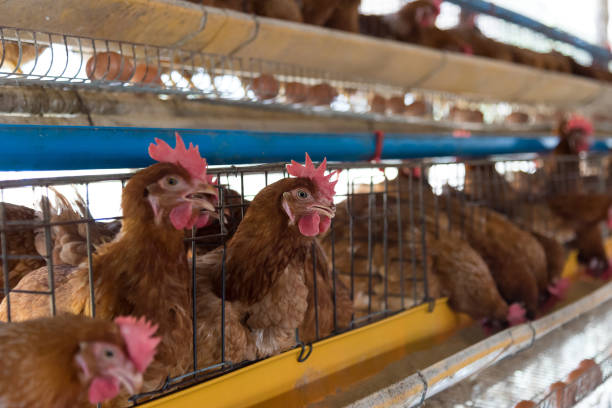Optimizing Water Intake: Battery Chicken Cages with Nipple Drinkers for Efficient Poultry Farming
Optimizing Water Intake: Battery Chicken Cages with Nipple Drinkers for Efficient Poultry Farming
Water is the lifeblood of any poultry farm. Ensuring that your chickens have access to fresh, clean water is paramount to their health, growth, and overall productivity. In modern poultry farming, particularly within battery chicken cage systems, nipple drinkers have emerged as a superior solution for water delivery, offering a multitude of benefits over traditional methods. This article delves into the critical role of water intake, explores the advantages of nipple drinkers in battery cage systems, and provides practical guidance on optimizing water management for efficient poultry farming.
The Vital Role of Water in Poultry Production
Water is not merely a component of a chicken’s diet; it’s an indispensable element for nearly every bodily function. Here’s why water is so crucial:
Hydration: This is the most obvious role. Water helps regulate body temperature, especially in hot climates, preventing heat stress which can significantly impact egg production and growth rates.
Digestion: Water aids in the breakdown and absorption of nutrients. It softens feed in the digestive tract, allowing for efficient nutrient extraction.
Waste Removal: Water is essential for flushing out waste products from the body, maintaining kidney function, and preventing toxicity.
Egg Production: Eggs are largely composed of water. Adequate water intake is absolutely vital for hens to produce eggs consistently. Dehydration directly translates to reduced egg production.
Overall Health: Water helps maintain the health of tissues and organs, supporting the immune system and overall wellbeing of the chicken.
A deficiency in water intake can lead to serious consequences, including:
Reduced Feed Intake: Chickens that are dehydrated tend to eat less, leading to stunted growth and reduced egg production.
Decreased Egg Production: Dehydration directly impacts the number and quality of eggs laid.
Heat Stress: Without sufficient water to regulate body temperature, chickens are highly susceptible to heat stress, which can be fatal.
Increased Mortality: Severe dehydration can ultimately lead to death, particularly in young chicks.
Battery Chicken Cages: An Overview
Battery chicken cages are a common method of housing laying hens in commercial poultry farms. They consist of rows of tiered cages, typically made of wire mesh, designed to maximize space utilization and streamline management practices. While the ethics of battery cages are often debated, they remain a widely used system for egg production, and advancements are constantly being made to improve welfare within these systems.
Nipple Drinkers: A Modern Solution for Water Delivery
Nipple drinkers represent a significant advancement in poultry watering technology. These devices consist of a small, valve-operated outlet that releases water when a chicken pecks at it. Here’s why nipple drinkers are superior to traditional methods like open troughs or bell drinkers, especially in battery cage systems:
Improved Hygiene: Nipple drinkers provide a closed water system, minimizing the risk of contamination from feed, feces, and other debris. This significantly reduces the spread of diseases and promotes better flock health. Open water sources are breeding grounds for bacteria and algae.
Reduced Water Wastage: Unlike open troughs, nipple drinkers deliver water only when needed. This drastically reduces water wastage, saving you money on your water bill and minimizing the burden on your water source. The controlled delivery prevents spillage and evaporation.
Cleaner and Drier Litter: Reduced water spillage translates to drier litter conditions. Dry litter reduces ammonia levels in the poultry house, improving air quality and reducing the risk of respiratory problems in the chickens.
Even Water Distribution: Nipple drinker systems can be designed to provide uniform water access to all birds in the cage, ensuring that even the more timid chickens receive adequate hydration.
Reduced Labor Costs: Nipple drinker systems require less manual cleaning and maintenance compared to open water sources, reducing labor costs and allowing farm staff to focus on other important tasks.
Medication Delivery Made Easy: Nipple drinkers can be easily integrated with medication delivery systems, allowing you to administer medications and supplements directly through the water line, ensuring that all birds receive the correct dosage.
Optimizing Water Intake with Nipple Drinkers in Battery Cages
While nipple drinkers offer numerous advantages, maximizing their effectiveness requires careful planning and management. Here are some key considerations:

Nipple Drinker Placement:
Start with the right height: The height of the nipple drinkers should be adjusted according to the age and size of the chickens. They should be positioned so that the chickens can easily reach them without straining or stretching excessively.
Space them adequately: Ensure that there are enough nipple drinkers to accommodate the number of birds in each cage. Overcrowding around the drinkers can lead to stress and inadequate water intake for some chickens. A good rule of thumb is to provide at least one nipple drinker for every 10-12 birds.
Accessibility is key: Place the nipple drinkers within easy reach of all birds in the cage, considering their natural pecking behavior and movement patterns.
Water Pressure:
Find the sweet spot: Maintaining the correct water pressure is crucial for optimal nipple drinker performance. Too much pressure can cause leakage and waste, while too little pressure can make it difficult for the chickens to access the water. Consult the manufacturer’s recommendations for the ideal pressure range for your specific nipple drinker model.
Regular checks are a must: Regularly check the water pressure at different points in the system to ensure consistent delivery.
Water Quality:
Cleanliness is non-negotiable: The water supplied to the nipple drinkers must be clean and free from contaminants. Regularly flush the water lines to remove any sediment or biofilm that may accumulate.
Consider filtration: Install water filters to remove particulate matter and other impurities.
Disinfection is your friend: Consider using a water sanitization system, such as chlorination or UV sterilization, to kill harmful bacteria and viruses.
Training Chicks:
Early introduction is crucial: Young chicks may need to be trained to use nipple drinkers. This can be done by gently tapping the nipple to release a drop of water and allowing the chicks to observe and learn.
Monitor their progress: Closely monitor the chicks to ensure that they are successfully using the nipple drinkers.
Regular Maintenance:
Keep it clean: Regularly inspect and clean the nipple drinkers to remove any debris or mineral buildup.
Replace worn parts: Replace worn or damaged nipples promptly to prevent leaks and ensure proper function.
Flush the system: Periodically flush the entire water system to remove any accumulated sediment or biofilm.
Monitoring Water Consumption:
Track the numbers: Monitor the daily water consumption of your flock. A sudden decrease in water intake can be an early indicator of health problems or environmental stress.
Compare to benchmarks: Compare your water consumption data to industry benchmarks to identify any potential issues.
Environmental Control:
Keep it cool: Maintaining a comfortable temperature in the poultry house is essential for promoting optimal water intake. Chickens tend to drink more water when it’s hot.
Ventilation is vital: Ensure adequate ventilation to remove excess heat and moisture, reducing the risk of heat stress.
Feed Management:
Balance is best: The type and composition of feed can influence water intake. Offer a balanced diet that meets the nutritional needs of your flock.
Adjust as needed: Adjust the feed formulation or feeding schedule as needed to optimize water intake.

Troubleshooting Common Problems
Even with the best planning and management, problems can still arise with nipple drinker systems. Here are some common issues and how to address them:
Leaking Nipples:
Check the pressure: This is often caused by excessive water pressure. Reduce the pressure to the recommended level.
Inspect the nipples: Check for damage or wear. Replace damaged nipples as needed.
Clogged Nipples:
Flush the system: This can be caused by sediment or mineral buildup. Flush the water lines thoroughly.
Clean the nipples: Clean the nipples with a small brush or needle to remove any obstructions.
Uneven Water Distribution:
Check the pressure: This can be caused by variations in water pressure throughout the system. Ensure consistent pressure at all points.
Inspect the lines: Check for blockages or leaks in the water lines.
Chickens Not Using Drinkers:
Training is key: This is common in young chicks. Provide training and monitor their progress.
Accessibility matters: Ensure that the nipple drinkers are properly positioned and easily accessible.
Conclusion
Optimizing water intake is crucial for the health, productivity, and profitability of any poultry farm. Battery chicken cages equipped with nipple drinkers offer a superior solution for water delivery, providing numerous benefits over traditional methods. By carefully planning and managing your nipple drinker system, monitoring water consumption, and addressing any problems promptly, you can ensure that your chickens receive adequate hydration, leading to improved flock health, increased egg production, and a more efficient and sustainable poultry operation. The investment in a well-designed and maintained nipple drinker system is an investment in the success of your poultry farm. Remember that constant monitoring and proactive management are the cornerstones of a thriving poultry business.





